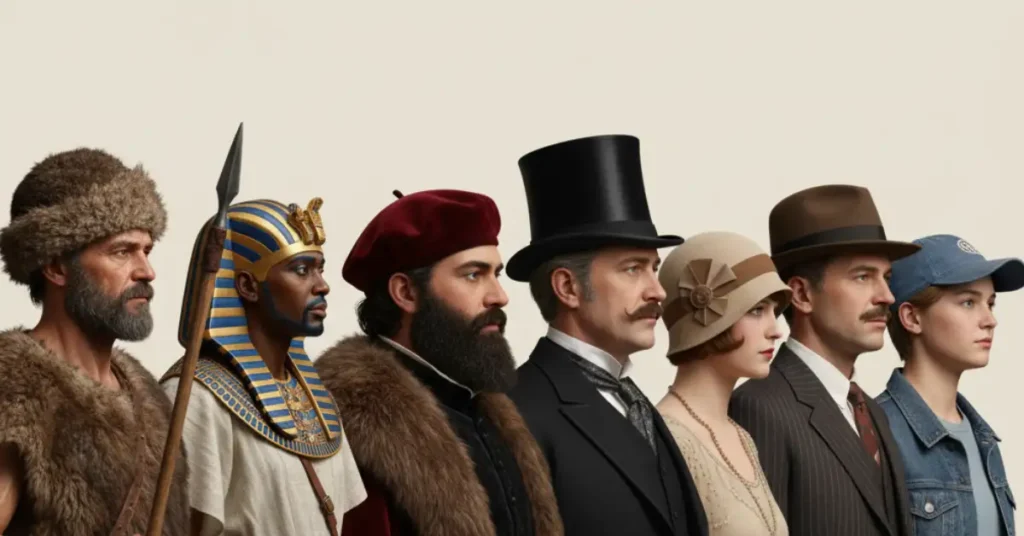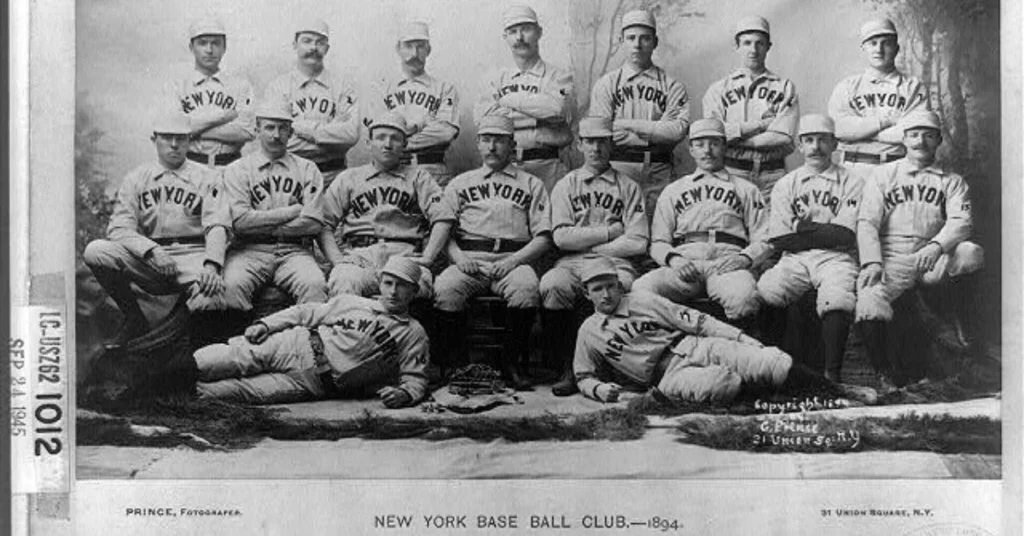Most people think Panama hats come from Panama. The name makes it easy to believe that, but they actually come from Ecuador. For hundreds of years, Ecuadorian artisans have been handweaving these hats from the soft leaves of the toquilla palm.
Panama hats are light, breathable, and strong. They were first made to protect farmers, fishermen, and travelers from the sun. Over time, people outside Ecuador noticed them.
Travelers, presidents, and movie stars began wearing them, making Panama hats one of the most popular hat styles in the world. Even though they are well-known today, the history of Panama hats is often misunderstood.
Let’s look at where they really began and how they became so famous.
Where Panama Hats Were First Made
Panama hats were first made in Ecuador, in towns like Montecristi and Cuenca. These towns became famous for high-quality, handwoven hats, which shows the true origin of Panama hats.
Families in these towns have passed down the weaving skills from generation to generation. Over time, the hats became more detailed and finely woven, showing the skill and dedication of the artisans.
Even though they are called Panama hats, their true origin is Ecuador. They are also known as Ecuadorian hats, Jipijapa hats, Montecristi hats, or Toquilla straw hats, all reflecting the place they come from and the material used to make them.
Fun Fact: In Ecuador, locals often call them “sombreros de paja toquilla” or Jipijapa, named after the straw and the town where they are made.
History of Panama Hats
Let’s explore how these hats started in Ecuador and became popular around the world.
16th Century: The First Hats in Ecuador
The history of Panama hats begins in Ecuador in the early 1500s. When Spanish explorers arrived in 1526, they saw local people wearing straw hats made from toquilla palm leaves. These hats covered the head, ears, and neck to protect them from the sun (according to Ecuador.com).
Some stories say the Spanish thought the hats looked a little like the head coverings worn by European nuns, called a tuca. We do not know if that is completely true, but it shows the hats were very different from what the Spanish were used to.
Because the hats were made from toquilla straw, people sometimes called them toquilla hats. Early on, families taught children how to weave from a young age, passing down the skill from generation to generation. This is where the origin of Panama hats started.
The Spanish thought the hats looked similar to a head covering worn by European nuns, called a tuca. Because they were made from toquilla straw, people started calling them “toquilla hats.”
17th and 18th Century: Hat Weaving Becomes a Craft
By the 1600s, hat weaving had developed into a small industry in coastal towns and some Andean villages. People were not just making hats to protect themselves from the sun—they were also showing skill and creativity in how they wove the straw.
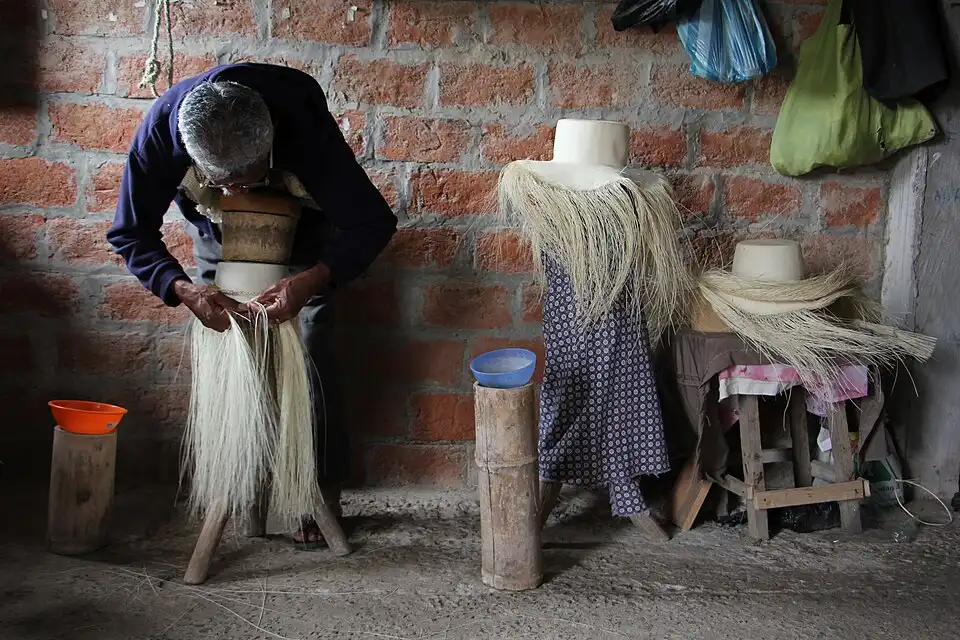
An Ecuadorian artisan weaving a traditional Panama hat using toquilla palm fibers, a craft passed down through generations. Image source: Wikimedia Commons.
The town along Ecuador’s coast became known for quality weaving. The work was done at home, often by families working together. This made Panama hats an important part of Ecuadorian culture. Over time, the weaving techniques improved, and the hats became lighter, stronger, and more comfortable.
19th Century: Panama Hats Travel the World
By the 1800s, Ecuadorian hats began traveling farther. Hats were shipped from Ecuador through the Isthmus of Panama and then sent to Asia, Europe, and the Americas. That is how the world started calling them Panama hats, even though they were made in Ecuador.
In 1835, a man named Manuel Alfaro moved to Montecristi and started a Panama hat business. His goal was to export hats to other countries. Ships from Guayaquil and Manta carried his hats to Panama, from where they reached the United States and Europe.
During the California Gold Rush, the hats became very popular. Travelers going to California had to cross Panama, and they needed hats to protect themselves from the sun. By 1850, Ecuador was exporting over 220,000 hats per year.
The name “Panama hat” appeared in publications by 1828. The 1855 World’s Fair in Paris gave the hats their first big international stage. Even though Ecuador was not mentioned as their origin, the event helped make Panama hats known all over the world.
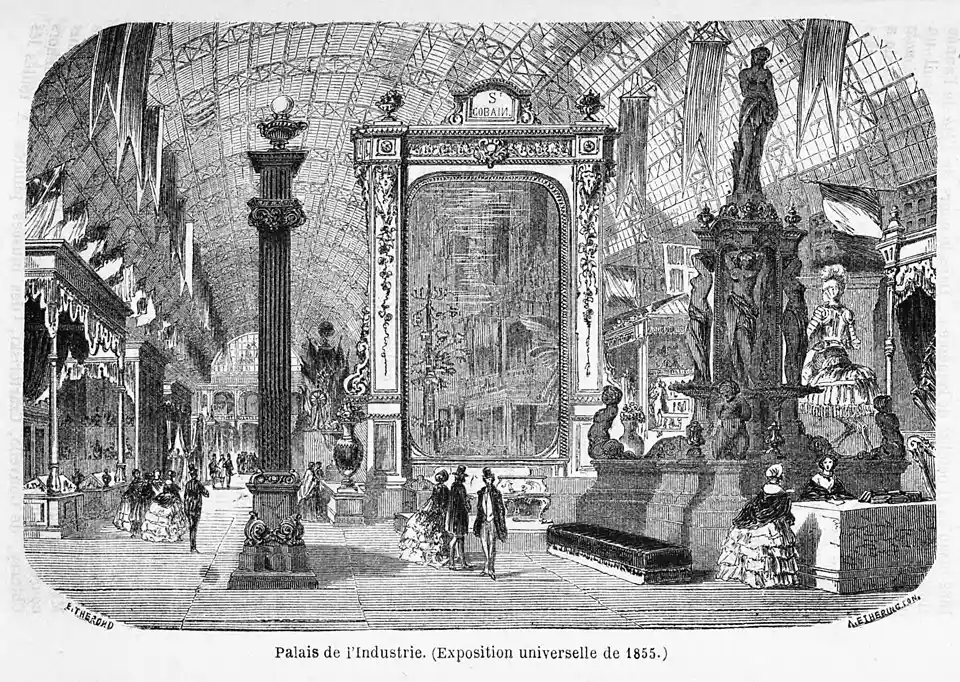
Panama hats were first shown to an international audience at the 1855 World’s Fair in Paris. Image: Public domain, via Wikimedia Commons.
Early 20th Century: Famous Wearers and Popularity
In 1906, U.S. President Theodore Roosevelt visited the construction site of the Panama Canal. He was photographed wearing a Panama hat, which made them even more famous.
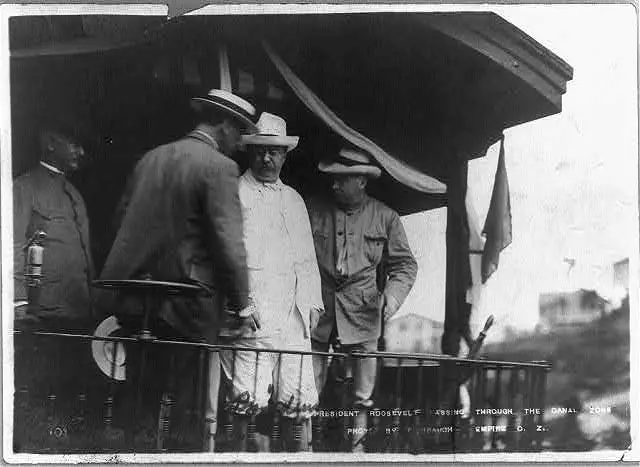
President Theodore Roosevelt wearing a straw hat during his 1906 visit to the Panama Canal. Image courtesy of the Library of Congress, public domain.
Many movie stars and public figures also wore Panama hats, including Orson Welles, Humphrey Bogart, Gary Cooper, and Galo Plaza. Wearing a Panama hat became a sign of style, travel, and sophistication.
In 1925, Turkey’s leader, Mustafa Kemal Atatürk, introduced the Hat Law, replacing the traditional fez with Western-style hats. Atatürk was sometimes seen wearing a Panama-style hat, showing how the hat had become a symbol of modern style and practicality worldwide.
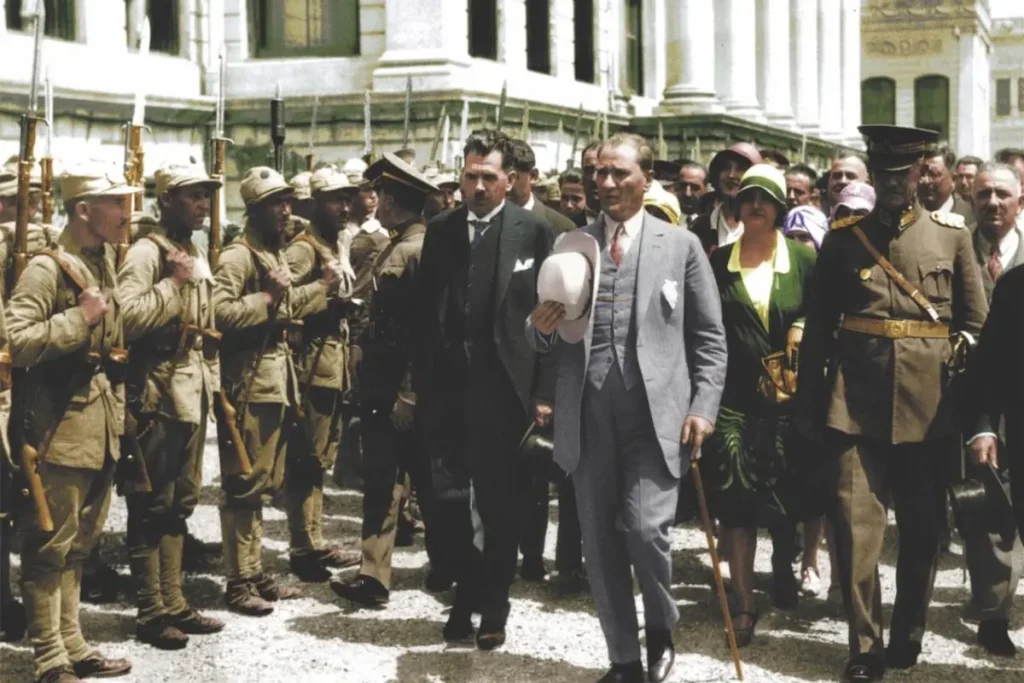
Mustafa Kemal Atatürk wearing a Panama-style hat during the 1925 Hat Reform in Turkey. Photo via Wikimedia Commons.
During the 1920s and 1930s, Panama hats became more popular as summer hats. Their lightweight, durability, and comfort made them a better choice than other summer hats at the time.
The Craft: How Panama Hats Are Made
Even today, Panama hats are made completely by hand. Each hat is traditionally made from plaited leaves of the toquilla palm, using techniques passed down for generations. The process takes skill, patience, and care. Here’s how it’s done:
1. Harvesting the Toquilla Palm
Artisans start with the young leaves of the toquilla palm, which grows in Ecuador. The leaves are soft, strong, and ideal for weaving.
2. Preparing the Leaves
The leaves are dried and split into thin strands. This step is delicate because the leaves must stay flexible and smooth for weaving.
3. Weaving the Hat
The hat is woven completely by hand. The weave can be loose for everyday hats or very tight for high-quality Montecristi hats. Some fine hats take weeks or even months to finish.
4. Shaping the Hat
After weaving, the hat is shaped and steamed to get its classic form. This process gives the hat its well-known Panama shape.
5. Finishing Touches
Finally, a hatband is added, usually black or brown. The edges are trimmed, and the hat is ready to wear.
Each step shows the dedication and skill of Ecuadorian artisans. A Panama headgear isn’t just a hat—it’s a piece of art that carries centuries of tradition.
Watch the video below to see how Panama hats are handwoven and shaped in Ecuador.
Why Panama Hats Are Special
Now that we know how much skill goes into making a Panama hat, it’s easier to see why they are so special.
- Light and breathable: Perfect for hot weather.
- Strong and durable: Even though they look delicate, a well-made hat lasts for years.
- Handcrafted: Each hat carries generations of skill in every weave.
- Cultural symbols: They represent Ecuadorian tradition and craftsmanship.
Even though cheaper versions are made in other countries today, nothing matches the quality of an authentic handwoven Panama hat. This is what makes them stand out and why people still treasure them around the world.
21st Century: Recognized by UNESCO
After understanding the care, skill, and tradition behind Panama hats, it’s easy to see why they are more than just fashion accessories.
In 2012, UNESCO officially recognized Ecuador’s traditional Panama hat weaving as an intangible cultural heritage of humanity. This shows how the craft is valued not just for style, but also for the history, skill, and tradition behind every handwoven hat.
Panama hats still provide a source of income for Ecuadorian families, especially in towns like Montecristi and Cuenca, where only a few master weavers can make the finest hats. Companies like K. Dorfzaun and Andes Munay help export these hats while supporting the local communities that keep the tradition alive.
You can watch the video below to see how Panama hats are handwoven. These traditional techniques are now recognized by UNESCO as part of Ecuador’s cultural heritage.
Panama Hats Today
Today, Panama hats are more than just sun protection—they’re a global fashion item. You can see them at beach resorts, summer weddings, and fashion shows. Celebrities like Jennifer Aniston and Meghan Markle wear them, showing how versatile and timeless they are.
Panama hats come in different variations and styles, such as the Fedora, Optimo, Cuenca, and Brisa. Each one has its own shape and texture, but all share the same handmade quality and lightweight feel that makes them so popular. Whether dressing up or keeping it casual, a Panama hat works well with almost any outfit.
Prices vary. Basic hats are affordable, while high-quality Montecristi hats can cost thousands of dollars because of the time and skill needed to make them.
Many Panama hats are still handwoven in Ecuador using traditional techniques. They represent craftsmanship, cultural pride, and style, keeping this centuries-old tradition alive.
Fun Facts About Panama Hats
- The finest Montecristi hats can take up to 8 months to make.
- Some handwoven Panama hats sell for thousands of dollars because of the skill required.
- Panama hats are also called Jipijapa, Toquilla, or Montecristi hats.
- High-quality Panama hats are flexible and can be folded without losing their shape.
- The most finely woven hats have sold for over $25,000, showing how valuable this craft can be.
Conclusion: A Hat with a Story
Panama hats have a long, fascinating history. They started as practical hats for sun protection in Ecuador. Over centuries, they became internationally famous for their quality, beauty, and craftsmanship.
A Panama hat is not just headwear. It is a piece of history and culture, handwoven by skilled artisans, connecting anyone who wears it to centuries of tradition and care.
If you enjoy learning about hat history, you might also like to explore how the baseball cap grew from a sports accessory into an American fashion staple or see how hats have evolved over time.
FAQs
Who invented the Panama hat?
No single person invented it. People in Ecuador began weaving straw hats hundreds of years ago to protect themselves from the sun. Over time, this local craft became what we now call the Panama hat.
What is the difference between toquilla and Panama hats?
Toquilla is the straw that comes from a palm plant in Ecuador. The Panama hat is the finished hat made from that toquilla straw.
How to identify an authentic Panama hat?
A real Panama hat is handmade in Ecuador from toquilla straw. It feels light, flexible, and smooth to the touch. You can also see tiny, even weaves when you look closely.
Different between authentic vs fake Panama hats?
An authentic Panama hat is woven by hand using natural toquilla straw. A fake one is usually made by a machine using cheaper materials like paper or plastic, and the weave looks uneven.
Why are Panama hats so expensive?
Because each hat takes days or even months to make by hand. Skilled artisans carefully weave fine straw, and the better the weave, the higher the price.

